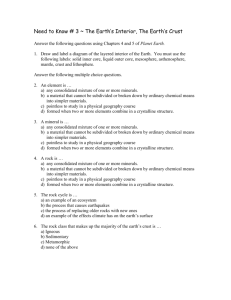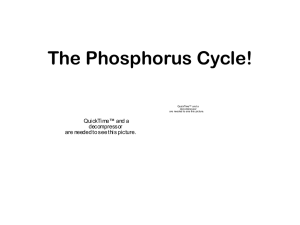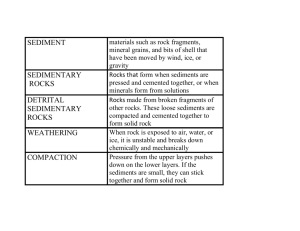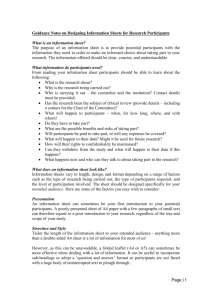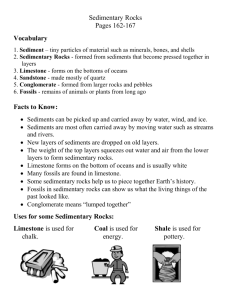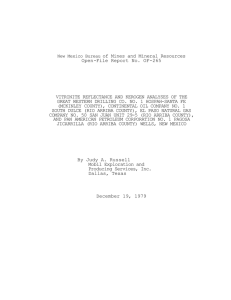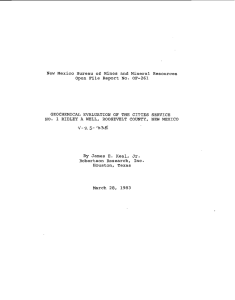2.9 learning experience worksheet (doc 103 KB)
advertisement
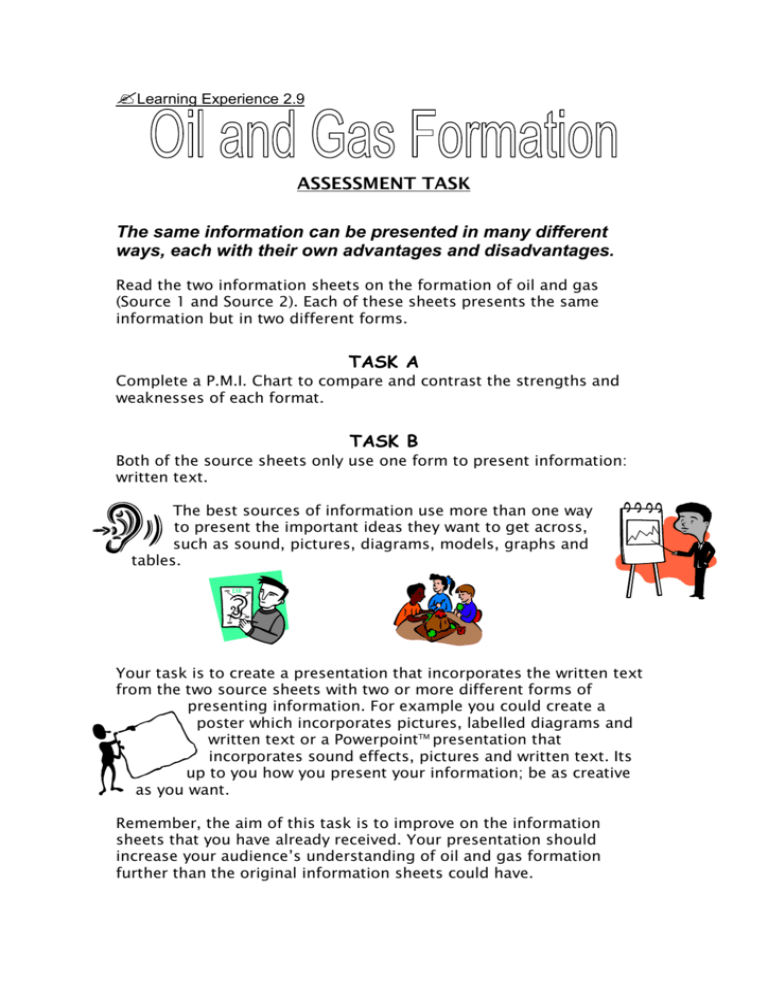
Learning Experience 2.9 ASSESSMENT TASK The same information can be presented in many different ways, each with their own advantages and disadvantages. Read the two information sheets on the formation of oil and gas (Source 1 and Source 2). Each of these sheets presents the same information but in two different forms. TASK A Complete a P.M.I. Chart to compare and contrast the strengths and weaknesses of each format. TASK B Both of the source sheets only use one form to present information: written text. The best sources of information use more than one way to present the important ideas they want to get across, such as sound, pictures, diagrams, models, graphs and tables. Your task is to create a presentation that incorporates the written text from the two source sheets with two or more different forms of presenting information. For example you could create a poster which incorporates pictures, labelled diagrams and written text or a PowerpointTM presentation that incorporates sound effects, pictures and written text. Its up to you how you present your information; be as creative as you want. Remember, the aim of this task is to improve on the information sheets that you have already received. Your presentation should increase your audience’s understanding of oil and gas formation further than the original information sheets could have. THE FORMATION OF OIL AND GAS Source 1 The story of how crude oil and gas is formed begins with the death of countless tiny marine creatures millions of years ago. Dead and decaying matter in the warm seas and river estuaries rains down onto the seabed from the teeming life above. This organic matter, mixed with sediments of sand and mud, is slowly buried beneath even more sediments deposited by the rivers and seas. As the sediments become more deeply buried, the pressures and temperatures within them increase. The increasing temperature and pressure slowly change the sediments into what we call sedimentary rocks, such as chalk, limestone, sandstone and shale. In the absence of oxygen, the dead organic matter in the sediments is transformed into an organic material called kerogen. At temperatures greater than 110°C the kerogen is changed into crude oil and natural gas. As a general rule, whether the conditions lead to the formation of oil or natural gas depends upon temperature; the hotter the conditions, the more likely it would lead to the formation of natural gas. This process is called generation. The rocks that contain the kerogen and from which the oil and gas are generated are called source rocks. The oil and natural gas are held as tiny droplets in the minute spaces in the source rocks – similar to the way a sponge holds water. THE FORMATION OF OIL AND GAS Source 2 Fossil fuels have taken millions of years to form Crude oil is made from plants and the bodies of tiny creatures that died millions of years ago These animals were buried under layers of sand and silt on the bed of the sea Due to this compact layering, this material did not decay as normal because the bacteria feeding upon them had little or no oxygen These sediments became more deeply buried and the increasing temperature and pressure slowly changed the sediment into rock The dead organic matter transformed into kerogen The rocks containing kerogen, from which oil and gas are generated, are called source rocks The Formation of Oil and Gas: Assessment Task TASK A - The strengths and weaknesses of two different representations of oil and gas formation. Source 1 – Written Text Pluses Minuses Interesting Source 2 - Text based Flow Chart Pluses Minuses Interesting THE FORMATION OF OIL AND GAS MARKING RUBRIC Use the Earth and Beyond Rubric to help you choose what information you need to include in your presentation and use the Communicating Scientifically Rubric to help you choose how you are going to present this information. Earth & Beyond Level 2 Level 3 Level 4 Level 5 I can identify the changes that needed to occur for oil and gas to be formed I understand that these changes needed to occur with certain conditions for oil and gas to form I can relate these changes to the conditions that are required to form oil and gas I can show using the correct terminology the process by which oil and gas are formed Developing Communicating Scientifically I can use everyday language to present my ideas I only use one form to present my information i.e. written text Fair I can use appropriate terminology to express changes, conditions and process. For example heat, pressure and compact I use more than one form to present my information i.e. written text and diagrams I acknowledge where I got my information from Good Excellent I use scientific terminology correctly to describe processes such as sedimentation I use scientific terminology that is specific to this task in an appropriate manner. For example I use the terms kerogen and generation in the appropriate context. I use more than one form to present my information and use headings and label diagrams to organise information. I get my information from a number of different sources I acknowledge where I got my information from and record this information in an appropriate way i.e. a bibliography I choose forms to present my information that specifically enhance the understanding of my audience I get my information from different locations and sources i.e. books and websites I acknowledge where I got my information from and record this information in an appropriate way i.e. a bibliography


